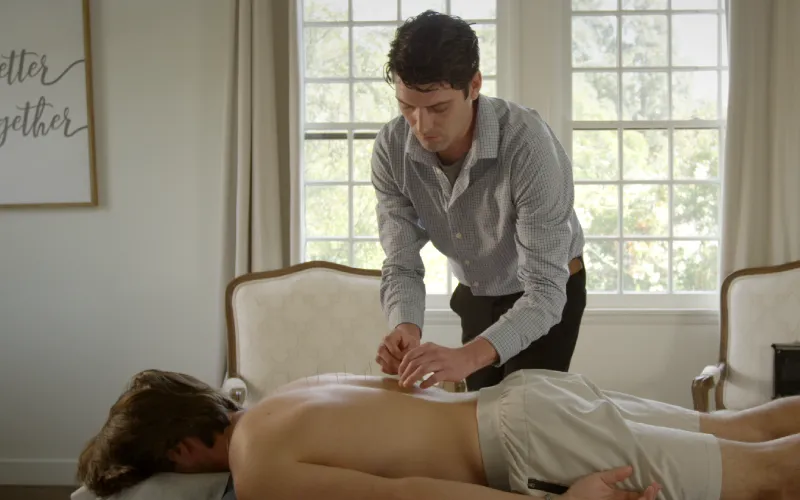
Table of Contents

Fentanyl is a strong synthetic opioid that is linked to a rising number of overdose deaths in the United States. Even a tiny amount can cause breathing to slow down or stop completely. Quick treatment for fentanyl overdose can save lives, and learning how to respond is an important skill for everyone.
Recognizing Fentanyl Overdose
Fentanyl overdose often happens quickly and can be deadly because it affects your ability to breathe. Learning how to spot the signs, tell it apart from other opioids, and what steps to take right away can help save lives.
Common Signs of an Overdose
Fentanyl overdoses can cause sudden and severe symptoms. A person may appear extremely sleepy or fail to respond when you try to wake them. They may have a slow, shallow, or even stopped breathing pattern.
Other signs include:
- Limp body
- Pale, blue, or cold skin, especially around the lips or fingernails
- Slow or no heartbeat
- Gurgling or choking sounds
- Very small, pinpoint pupils
These symptoms can appear quickly after using fentanyl. It is important to look for more than one sign. If you notice a mix of these symptoms, the person may be experiencing a serious fentanyl overdose.
Distinguishing from Other Opioid Overdoses
Fentanyl works faster and is much stronger than many other opioids. Overdose symptoms may begin within minutes, sometimes just seconds, after use.
Unlike other opioid overdoses, where the person may still be able to talk or respond for a short time, fentanyl overdoses often result in a rapid loss of consciousness. Breathing slows quickly, and pupils may shrink to a pinhead size, even more than with other opioids.
A unique sign of fentanyl overdose can be muscle stiffness in the chest, known as “wooden chest syndrome.” This makes it even harder to breathe and is less common with other drugs.
Because fentanyl is so potent, you may see a much faster decline in the person’s condition compared to other opioids like heroin or oxycodone. It is critical to act right away if you suspect fentanyl is involved, not wait, or assume it follows the same pattern as other opioids.
Immediate Action Steps
If you believe someone is having a fentanyl overdose, the first step is to call 911 immediately. While waiting for help, follow the instructions given by emergency services. Do not leave the person alone. Stay and monitor their breathing and responsiveness. A fast response is key to preventing death or long-term harm.
What Is Fentanyl?
Fentanyl is a powerful synthetic opioid used medically to treat severe pain, often after surgery or in cases of advanced cancer. When prescribed, it’s carefully dosed and closely monitored. However, illicitly manufactured fentanyl has become a major driver of overdose deaths across the United States.
This substance is up to 100 times more potent than morphine and 50 times more potent than heroin. Just a tiny amount can cause an opioid overdose, especially when people unknowingly take drugs like cocaine or counterfeit pills that have been laced with fentanyl or fentanyl analogues.

Emergency Treatment for a Fentanyl Overdose
Fentanyl is often mixed into drugs like heroin, cocaine, or counterfeit pills without the user knowing, which dramatically increases the risk of overdose and death.
If you witness an opioid overdose, particularly one involving fentanyl or fentanyl analogs, acting quickly can save a life.
Administer Naloxone
Naloxone (brand name Narcan) is a medication that can reverse an opioid overdose by blocking opioid receptors in the brain. It is a critical opioid overdose reversal medication available in a nasal spray or injectable form.
Even one dose of naloxone may be enough to revive someone, but due to how potent synthetic opioids like fentanyl are, multiple doses may be needed.
If someone is unresponsive, has blue lips or skin, or has stopped breathing, give naloxone immediately. Spray it into one nostril if using a nasal device. Inject it if you have the injectable version.
Wait 2–3 minutes. If the person does not wake up or begins to slip back into unconsciousness, give another dose. Naloxone is safe to use and has no effect on people without opioids in their system.
Call Emergency Services
After administering naloxone, call 911 or your local emergency number. Tell the dispatcher that you suspect a fentanyl overdose or an opioid-related emergency. Do not wait for symptoms to worsen. Overdose effects from fentanyl can escalate within seconds.
Even if the person seems to recover from the overdose, they are still at risk. Illicitly manufactured fentanyl often lasts longer in the body than naloxone, meaning symptoms can return suddenly.
Emergency and first responders can provide additional naloxone, assist with breathing, and transport the person to receive further support and treatment.
If you’re scared to report an overdose, remember that many states have a Good Samaritan Law. This means you are protected from legal trouble when calling for help during a suspected overdose.
Perform Rescue Breathing
Fentanyl overdoses slow or stop normal breathing. If the person is not breathing or only gasping, start rescue breathing.
Here is what to do:
- Lay the person on their back.
- Tilt their chin up and pinch their nose shut.
- Give one slow breath into their mouth, watching for the chest to rise.
- Give one breath every five seconds.
Continue rescue breathing until the person breathes on their own, emergency services arrive, or you become too tired to continue. Rescue breathing provides oxygen to the body and buys time for naloxone to take effect.
Monitor Vital Signs
After administering naloxone and initiating rescue breathing, continue to monitor the person’s vital signs. Watch for changes in their breathing, skin color, and pulse.
- Breathing: Count breaths per minute. A normal adult breathes 12 to 20 times per minute.
- Skin color: Blue lips or fingertips mean little oxygen is getting through.
- Pulse: Check for a pulse at the wrist or neck. No pulse or a very slow pulse is dangerous.
Write down any changes as you see them. Share this information with emergency workers when they arrive. This information can help doctors treat an overdose faster and better.
Medical Response and Post-Treatment Care
When you are treated for a fentanyl overdose, medical staff need to act fast. Fentanyl is a powerful synthetic opioid, and its overdose effects can last longer and require close monitoring even after you start to wake up.
Whether the overdose involved prescription opioids or illicitly manufactured fentanyl, timely medical care can help decrease the risk of overdose complications and support your recovery.
Hospital Interventions
If you’re brought to the hospital after experiencing an overdose, the priority for doctors and nurses is to stabilize your breathing and heart rate.
You can expect to receive oxygen or be placed on a ventilator if you cannot breathe well on your own. Naloxone may be given more than once if symptoms return.
Vital signs, such as blood pressure, heart rate, and oxygen levels, are closely monitored. You may have an IV in your arm for medications and fluids. If you have low blood sugar or other medical conditions, these will also be treated right away.
Because fentanyl may be mixed with other substances, doctors may run tests to check for other illicit drugs, which may also contribute to the risk of overdose. This helps guide effective treatment.
Managing Complications
Even after your breathing is restored, complications can still develop. For example, swallowing vomit or substances while unconscious may lead to pneumonia. In some cases, people may lose consciousness again as opioid receptors in the brain remain affected.
Your kidneys and liver will be monitored to ensure they are functioning properly. Some people may have long-term health issues if their organs do not recover quickly.
Sometimes anxiety, confusion, or other mental health concerns can occur, especially if it is not your first overdose. Doctors may involve mental health or addiction teams to create a care plan for you.
Many hospitals now involve mental health professionals and addiction support teams to create a personalized care plan. This kind of care addresses both the substance use disorder and the underlying health challenges tied to opioid misuse.
Observation Period
After naloxone is administered, it is essential to monitor you for several hours. Fentanyl can last longer in your system than the reversal medication, so that symptoms may come back suddenly.
Hospitals usually observe you for at least 2–4 hours, but it can be much longer if you took a large amount, have other health problems, or if you stop breathing again. Staff will monitor your breathing, heart rate, and alertness throughout the entire process.
If you feel tired or confused, tell your nurse. You may also meet with follow-up care teams to discuss the next steps, which may include addiction support services. Many people who survive an overdose continue to need care after leaving the hospital, especially to prevent future problems.

Overdose Prevention and Education
Preventing fentanyl overdose involves learning how to reduce harm, expanding the availability of treatment, and sharing clear information about risks. Many steps focus on getting the right tools and knowledge to people when they need them most.
Harm Reduction Strategies
Harm reduction strategies reduce the risk of overdose by giving you practical tools and information.
One of the most practical tools available is the fentanyl test strip. These strips let people check whether drugs like heroin, cocaine, or counterfeit pills contain fentanyl, which helps prevent accidental exposure to illicitly manufactured fentanyl.
Always using drugs with someone else can help save lives.. If something goes wrong, someone nearby can call for help or use naloxone. You should also keep in mind that mixing drugs, especially opioids, with other substances like alcohol or benzodiazepines, can rapidly increase your risk of overdose.
Community organizations may offer clean syringes and safe spaces to prevent further injury. They also provide education on safer use and what signs to watch for in case of trouble. Adopting these habits can protect your health and reduce the risks you face.
Access to Naloxone
Naloxone is a medicine that can quickly reverse a fentanyl overdose if given in time. It is available as a nasal spray or injection. Many states allow you to purchase naloxone at a pharmacy without a prescription.
Carrying naloxone if you use opioids or know someone who does can be lifesaving. Learning how to use it properly is easy, and many places offer free training. Some community centers and health departments also give out naloxone kits along with clear instructions.
The CDC and local health groups encourage you to keep naloxone on hand, especially if you are around people at risk. Acting quickly with naloxone and carrying it with you could save a life.
Community Awareness Programs
Community awareness programs provide information about fentanyl and direct you to resources for help if needed. These public health programs often cover how to spot the signs of an overdose, how to access treatment, and where to find harm reduction supplies.
Schools, workplaces, and local events may host talks, hand out flyers, or even offer basic training on responding to an overdose. By joining or supporting these programs, you help spread life-saving knowledge and information. Your actions could help prevent overdoses and connect people with important treatment and recovery resources.
Find Substance Use Disorder Treatment Near You
Living with substance use disorder can feel overwhelming, but help is closer than you think. Whether you’re struggling with opioid use or simply looking for support to make a change, treatment options are available near you.
Explore substance use disorder treatment centers in your area and connect with professionals who understand what you’re going through. You deserve safety, dignity, and a path forward, no matter where you are on your journey.
Frequently Asked Questions
How can you recognize signs of a fentanyl overdose?
You may notice that a person is breathing slowly or has stopped breathing completely. Other signs can include blue or gray lips and fingertips, very small pupils, and being unable to wake up. Response time matters, so always take these signs seriously.
Which immediate steps should be taken in case of a fentanyl overdose?
Call 911 right away if you think someone has overdosed. Administer naloxone if available, and stay with the person until help arrives.
What is the recommended dosage of naloxone for reversing a fentanyl overdose?
Try one dose of naloxone first. If there is no response after 2-3 minutes, give a second dose. Fentanyl can be very strong, and sometimes more than one dose is needed to reverse the overdose.
How long does it take for overdose symptoms to appear after ingesting fentanyl?
Symptoms can start within minutes after fentanyl is taken. Because fentanyl is very potent, effects may start faster than with other opioids. Some forms, like powder or pressed pills, can cause problems even more quickly.
Can fentanyl overdose symptoms recur after initial treatment?
Yes, overdose symptoms can return after naloxone wears off. Fentanyl may last longer in the body than naloxone does. It is essential to stay with the person and monitor for signs that they are deteriorating. Call emergency services to ensure ongoing care.
What are the long-term effects of a fentanyl overdose on health?
A fentanyl overdose can result in brain damage, especially if the lack of oxygen lasts for a while. Some people may have memory problems or trouble thinking. Other long-term effects depend on how quickly the overdose was treated and if there were any complications during recovery.








































